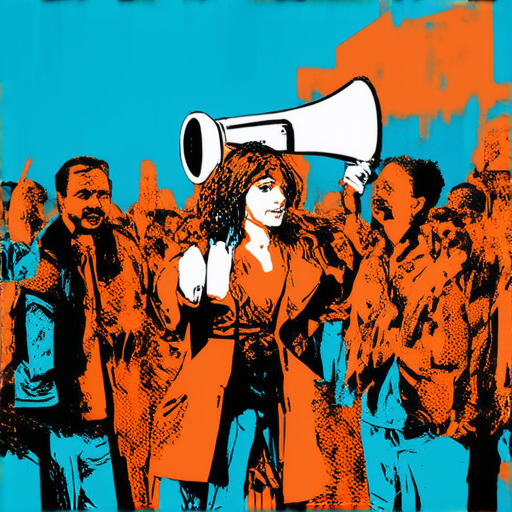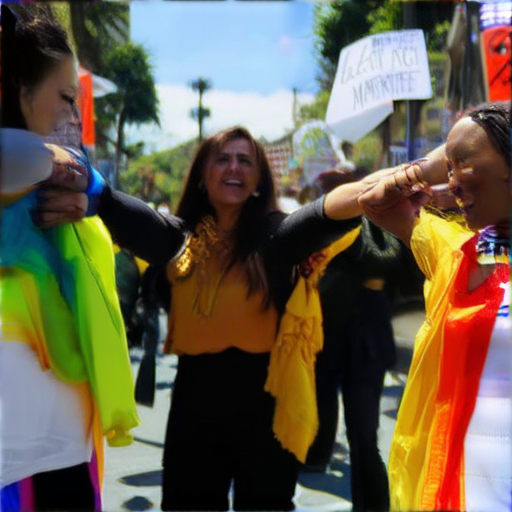As the world grapples with pressing issues like inequality, injustice, and environmental degradation, activism events have become a vital force in driving change and promoting human rights. From grassroots movements to high-profile campaigns, activism has evolved into a powerful tool for mobilizing people and sparking meaningful conversations. In this article, we’ll delve into the world of activism events, exploring what they are, why they matter, and how individuals can get involved in creating positive impact.
From the streets of New York City to the halls of power in Washington D.C., activism events have been instrumental in shaping public policy and advancing social justice causes. Whether it’s a protest against systemic racism, a rally for LGBTQ+ rights, or a campaign to protect the environment, these events bring people together to demand change and hold leaders accountable. By examining the role of activism events in human rights campaigns, we can gain a deeper understanding of their significance and explore ways to harness their power for good.
With the rise of social media and online platforms, activism events have become more accessible than ever before. From virtual rallies to in-person protests, there are countless ways to participate in and support activism efforts. As we navigate the complexities of modern activism, it’s essential to recognize the importance of community engagement, collective action, and strategic planning. By working together, we can create a more just and equitable society – one event at a time.

The Most Common Forms of Activism
Pressure Tactics and Community Engagement
Pressure Tactics:
- Letterwriting and Petitions: Two of the most common forms of activism, letterwriting and petitions pressure public officials, corporations, and other powerholders to take action.
- Boycotts and Divestment: Boycotts and divestment campaigns aim to economically pressure organizations to change their policies or practices.
- Protests and Demonstrations: Public protests and demonstrations draw attention to social issues and push for policy changes.
Community Engagement:
- Voter Registration and Mobilization: Encouraging citizens to register and vote is crucial for shaping public policy and holding elected officials accountable.
- Volunteer Work and Community Service: Volunteering and community service help build relationships within communities and foster a sense of social responsibility.
- Education and Awareness Campaigns: Raising awareness about social issues through education and outreach programs can inspire individuals to take action.
Other Forms of Activism:
- Nonviolent Resistance: Nonviolent resistance tactics, such as civil disobedience and sit-ins, have been effective in bringing attention to social injustices.
- Social Media Campaigns: Utilizing social media platforms to raise awareness and mobilize support has become increasingly important in modern activism.
- Policy Advocacy: Working with policymakers and advocating for policy changes can lead to lasting impact and systemic reform.
Understanding Activism Activity
Activism activities refer to the various ways individuals and groups engage in efforts to bring about positive change in society, often focusing on issues related to social justice, human rights, and environmental sustainability.
Key Characteristics of Activism Activities
- Promoting reform: Activists work towards creating systemic changes that benefit society as a whole.
- Impeding injustice: By opposing policies or actions deemed unjust or discriminatory, activists aim to protect marginalized communities.
- Direct intervention: Activists may take direct action, such as protests, boycotts, or civil disobedience, to draw attention to a cause.
- Intervening in policy-making: Activists may participate in advocacy campaigns, lobbying governments, or supporting legislation that aligns with their values.
Types of Activism Activities
- Civil Rights Activism: Focusing on eliminating racial and ethnic disparities, promoting equality, and protecting individual freedoms.
- Environmental Activism: Working to preserve natural resources, mitigate climate change, and promote sustainable practices.
- Social Justice Activism: Addressing issues like poverty, inequality, and access to education, healthcare, and other essential services.
- Animal Rights Activism: Advocating for animal welfare, conservation, and protection against cruelty and exploitation.
Effective Strategies for Engaging in Activism Activities
- Education and awareness: Raising public consciousness about important issues through workshops, lectures, and media outreach.
- Community building: Building coalitions, networks, and alliances to amplify collective impact and leverage shared resources.
- Advocacy and mobilization: Organizing campaigns, petitions, and rallies to influence policy decisions and drive social change.
- Nonviolent resistance: Employing peaceful protest methods, such as sit-ins, boycotts, and civil disobedience, to challenge unjust systems.
Conclusion
Activism activities play a vital role in shaping societal norms, promoting human rights, and driving positive change. By understanding the characteristics, types, and effective strategies involved in activism, individuals can become empowered agents of change, working together to create a more just and equitable world.

Forms of Activism
- Nonviolent Direct Action: This type of activism involves direct confrontation with the issue being protested, often through peaceful means such as sit-ins, boycotts, and civil disobedience.
- Advocacy and Lobbying: Advocates work to influence policy decisions by meeting with lawmakers, testifying before committees, and organizing campaigns to raise awareness about specific issues.
- Community Organizing: Community organizers bring people together to build coalitions, mobilize resources, and develop collective power to effect change within their communities.
These forms of activism can be effective in bringing attention to social and environmental issues, pushing for policy changes, and inspiring individual actions that contribute to a larger movement.
In addition to these primary forms, there are many other ways individuals and groups can engage in activism, including:
- Grassroots movements**: These are local, community-based initiatives that focus on addressing specific issues affecting a particular geographic area.
- Boycotts and divestment campaigns**: These tactics involve refusing to support companies or institutions that engage in undesirable practices, in order to pressure them into changing their behavior.
- Artistic expression**: Artists can use their work to convey messages about social justice issues, inspire empathy, and challenge societal norms.
By understanding the various forms of activism available, individuals can choose the approach that best suits their goals and values, and work towards creating positive change in their communities and beyond.

The Four Key Roles of Activism
The concept of activism encompasses various roles that individuals can take on to drive positive change in society. Understanding these distinct roles is crucial for effective collaboration and achieving collective impact. Here are the four primary roles of activism:
- Helpers: As helpers, activists provide support and resources to those affected by social issues. They often work behind the scenes, offering assistance with tasks such as fundraising, event planning, and community outreach. By doing so, they empower marginalized groups and enable them to advocate for themselves.
- Change Agents: Change agents are proactive activists who seek to transform systems and institutions to create lasting change. They employ various tactics, including lobbying, advocacy, and education, to bring attention to critical issues and push for policy reforms. Their efforts can lead to significant improvements in social justice and human rights.
- Rebels: Rebels are passionate activists who challenge the status quo and confront oppressive systems head-on. They often engage in direct action, such as protests, boycotts, and civil disobedience, to draw attention to injustices and spark meaningful conversations. While their methods may be unconventional, rebels play a vital role in pushing boundaries and driving systemic change.
- Advocates: Advocates are skilled activists who specialize in promoting the interests of specific communities or causes. They work tirelessly to raise awareness, mobilize public opinion, and influence decision-makers to create a more just and equitable society. Through their efforts, advocates help shape policies and laws that benefit marginalized groups and promote social progress.
The Four Types of Social Movements
- 1. Contentious Movement: A contentious movement involves direct confrontation between opposing groups, often resulting in violence or civil unrest. These movements typically focus on achieving immediate change through dramatic actions, such as protests, boycotts, or strikes.
- 2. Noncontentious Movement: Noncontentious movements, on the other hand, do not involve direct confrontation and instead aim to bring about change through gradual, peaceful means. Examples include advocacy campaigns, lobbying efforts, and community organizing initiatives.
- 3. Structural Movement: Structural movements seek to alter the underlying institutions, systems, or structures that perpetuate social problems. These movements often focus on policy changes, reforming laws, or addressing systemic inequalities.
- 4. Cultural Movement: Cultural movements emphasize the importance of changing cultural norms, values, and attitudes. They often focus on promoting diversity, inclusivity, and social justice, and can influence societal values and behaviors over time.
These four categories are not mutually exclusive, and many social movements blend elements from multiple categories to achieve their goals. Understanding the different types of social movements can provide valuable insights into the complexities of social change and the various strategies employed by activists and organizations seeking to create positive impact.

The Best Type of Activism
Activism encompasses various forms, each with its unique goals, methods, and impact.
- Nonviolent Resistance: Aims to challenge unjust systems through peaceful means, often involving civil disobedience and direct action.
- Social Justice Movements: Focuses on addressing systemic inequalities, advocating for human rights, and promoting equality among marginalized groups.
- Environmental Activism: Seeks to protect the planet by raising awareness about ecological issues, promoting sustainable practices, and pushing for policy changes.
- Community Organizing: Involves building coalitions, mobilizing resources, and empowering local communities to drive positive change.
- Artistic Activism: Utilizes creative expression, such as art, music, and literature, to convey messages, raise awareness, and inspire social change.
Each type of activism has its strengths and weaknesses, and effective engagement often requires a combination of approaches.
Key Considerations for Choosing the Best Type of Activism
When selecting a type of activism, consider the following factors:
- Personal Values and Interests: Align your activism with your core values and passions to ensure long-term commitment and motivation.
- Target Audience and Goals: Identify the most effective approach to reach your desired audience and achieve your objectives.
- Resources and Support: Assess the availability of resources, networks, and expertise necessary to execute your chosen activism strategy.
Ultimately, the best type of activism is one that resonates with you, effectively addresses pressing issues, and inspires meaningful change.

0 Comments